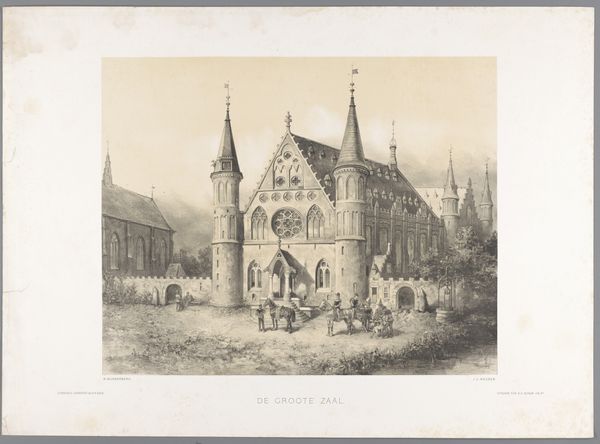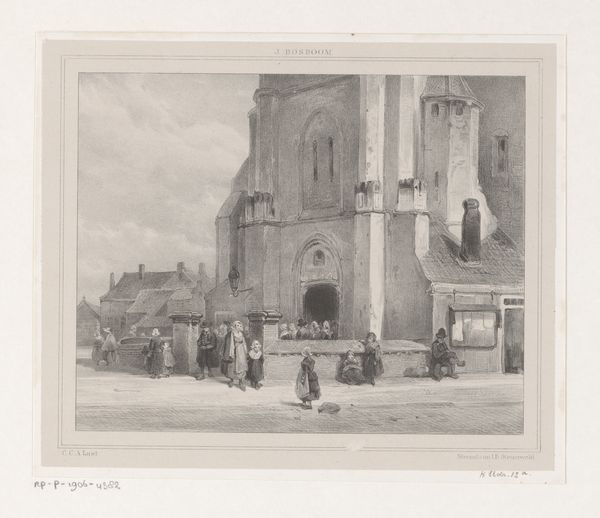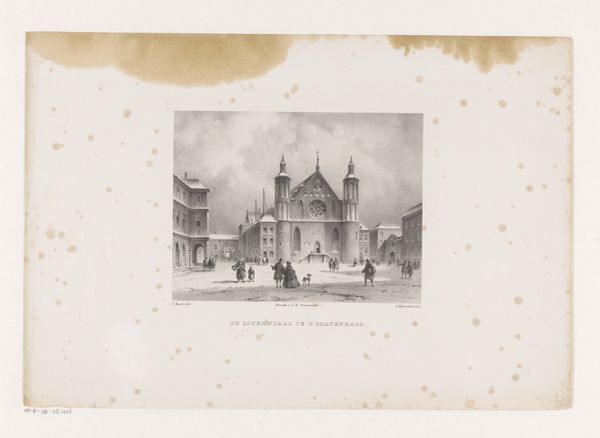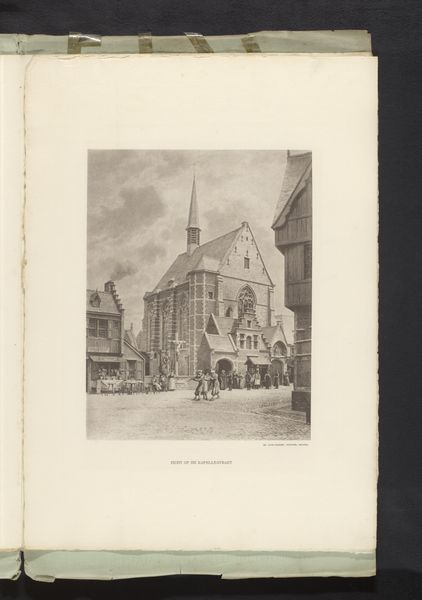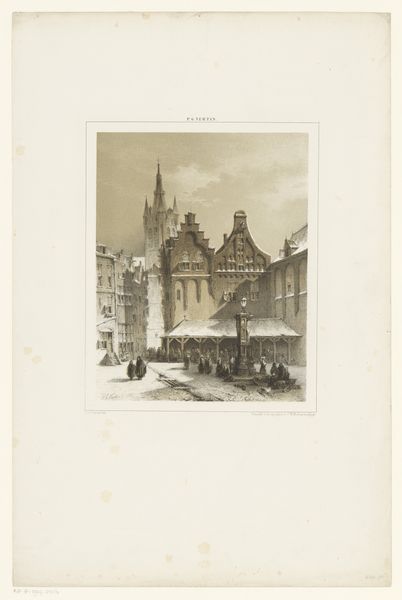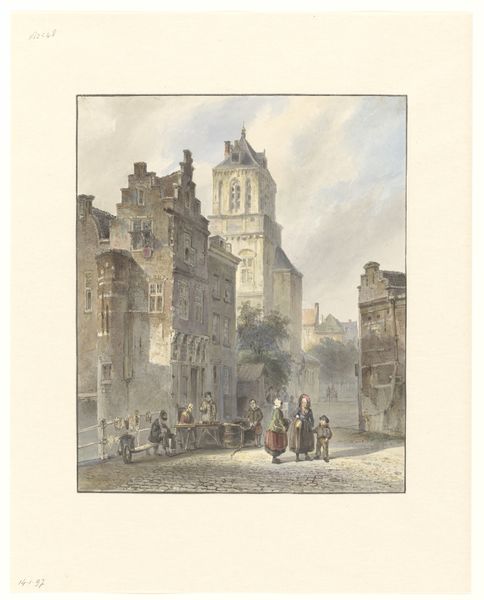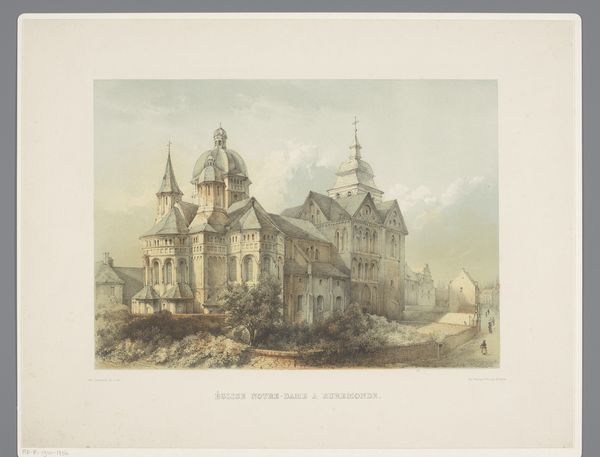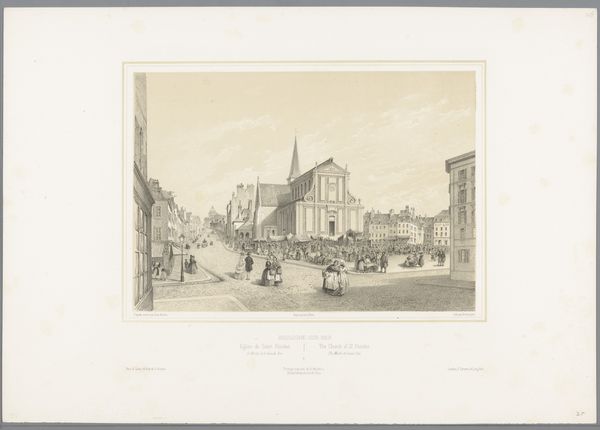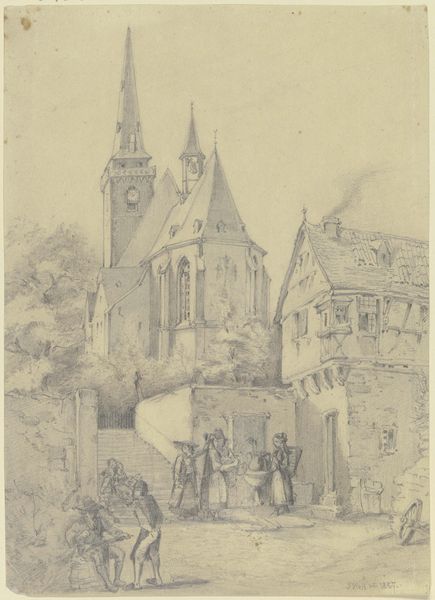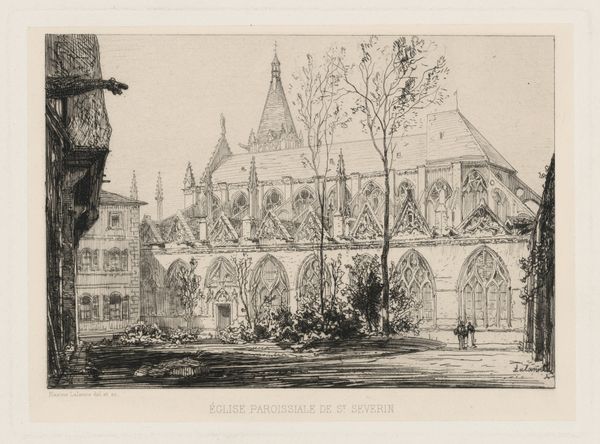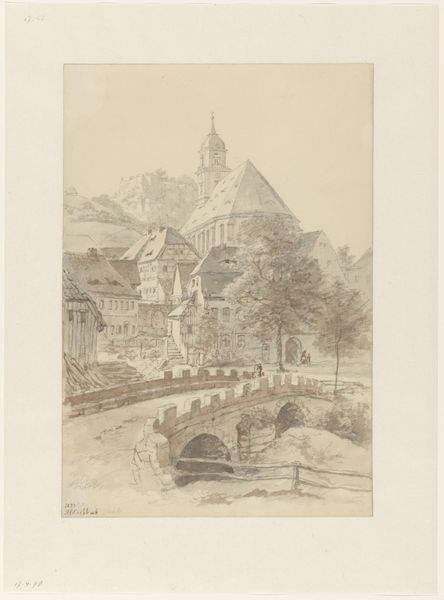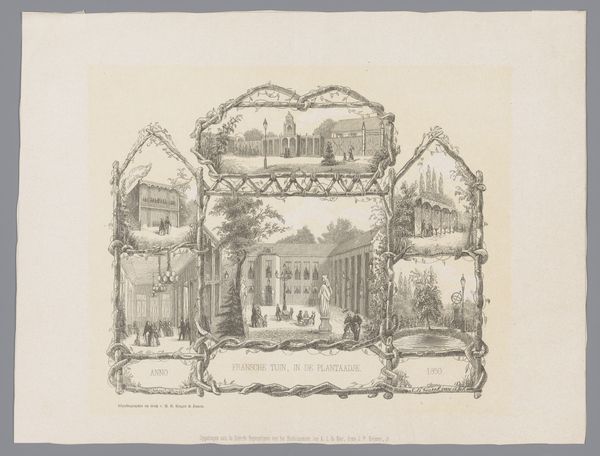
Dimensions: height 427 mm, width 552 mm
Copyright: Rijks Museum: Open Domain
Curator: Here we have Alexander Schaepkens' "Onze-Lieve-Vrouwe-Basiliek te Maastricht," a watercolour from 1855, housed right here at the Rijksmuseum. It depicts the iconic basilica in Maastricht. What's your initial reaction? Editor: It has a ghostly quality, almost like a memory fading into the aged paper. The muted tones evoke a sense of quiet contemplation, as if time itself is holding its breath before this grand structure. Curator: The basilica's prominence in the cityscape is striking, isn't it? Schaepkens captures its architectural complexity with remarkable detail. It's interesting to consider the role of such buildings in 19th-century civic life – serving not just as religious centers but as visual anchors of communal identity. Editor: Exactly. I am drawn to how Schaepkens presents this religious edifice nestled amongst a gathering of figures that seems predominantly working-class. I wonder, how did this architecture influence the inhabitants who moved about their labour so closely? How accessible and inclusive was this monumental architecture? Curator: Those are crucial questions. This piece allows us to examine the intersections of religion, class, and the urban landscape, reflecting the social hierarchy inherent in 19th-century European cities. Consider the relationship between the power embodied in religious institutions and the daily lives of its citizenry. Editor: Absolutely. And, even through the artist's lens, there is perhaps an idealisation that still conceals deeper tensions related to power, piety, and social stratification. Curator: And isn’t that idealization, or romanticisation if you will, precisely the artist's intention within the Romanticist aesthetic he was working? We're not getting gritty realism here; we see what Schapekns intended to show us, a particular view carefully constructed and rendered. Editor: Perhaps… While I remain hopeful about uncovering truths within the layers. Overall, a reminder that artworks can indeed spark critical dialogues about social structures and historical context. Curator: Indeed. These perspectives on "Onze-Lieve-Vrouwe-Basiliek te Maastricht" invite us to see art as more than just aesthetic beauty; but as a vibrant document reflecting its era. Editor: Well said. Thank you for offering your informed insights; they have expanded my viewpoint considerably.
Comments
No comments
Be the first to comment and join the conversation on the ultimate creative platform.
